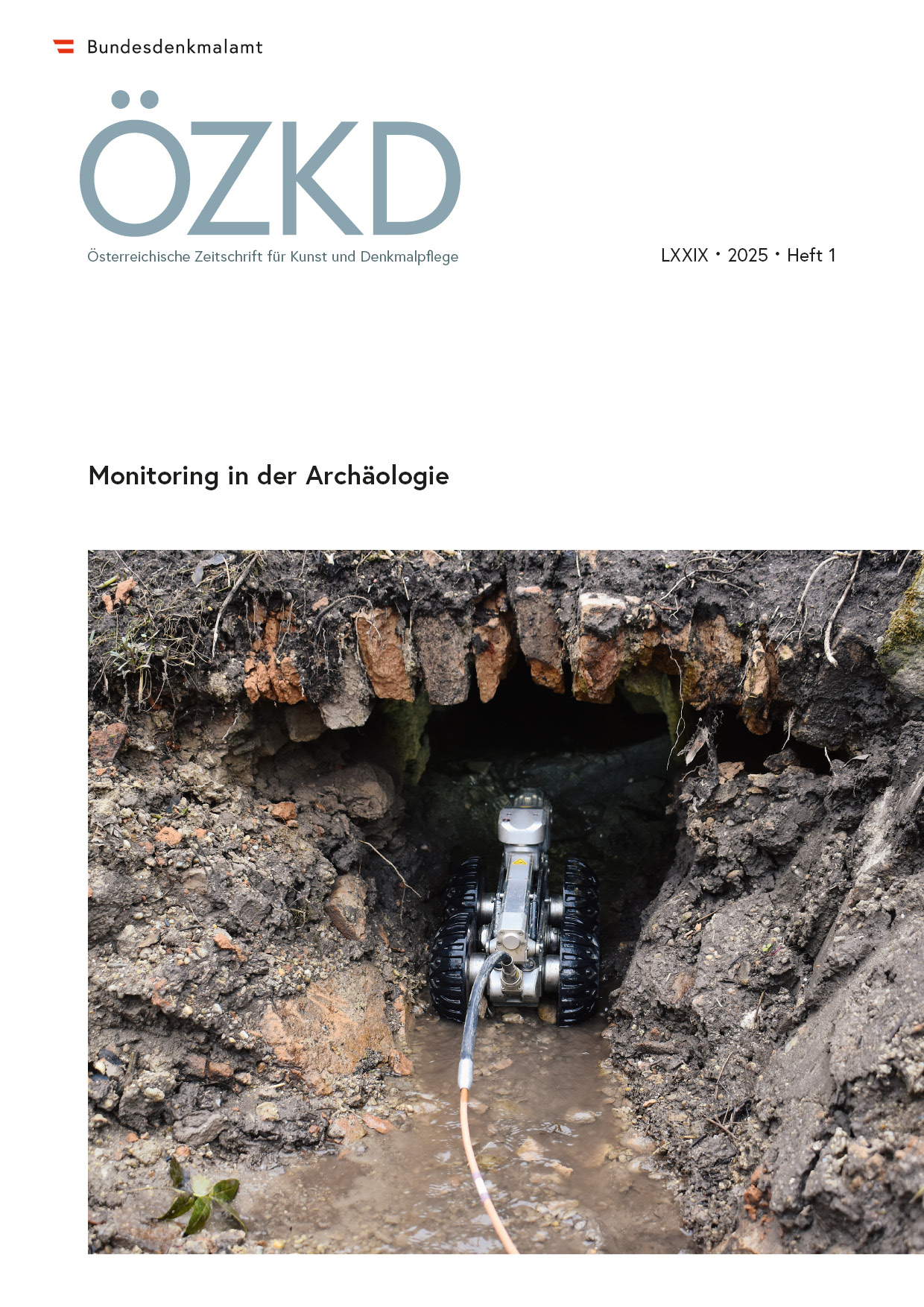
ÖZKD LXXVIII 2025 Heft 1, pp. 80-88, 2025/05/08
Monitoring in der Archäologie

The Kainach necropolis lies on the orographic left bank of Kainach, close to its estuary into the Mur River. During multiple excavation campaigns, several hundred cremation graves were discovered, and just as many urns and funerary objects were recovered using block excavation. A total of 513 primarily prehistoric objects were documented, and around 15% of the grave inventories were completely restored and preserved. Recovery, packaging, and continual ob-servation (monitoring) are crucial if long-term interim storage is to succeed while conserving the state of preservation, a fact that is already described in the standards for the conservation treatment of archaeological finds. But storing block excavations over the long term with no opportunity to view the condition of the grave findings involves risks. As shown by the extreme example of Grave 218, with carefully packed block excavations and under suitable storage conditions, the recovered condition of grave findings can be maintained over a long period (in our case, over 17 years).